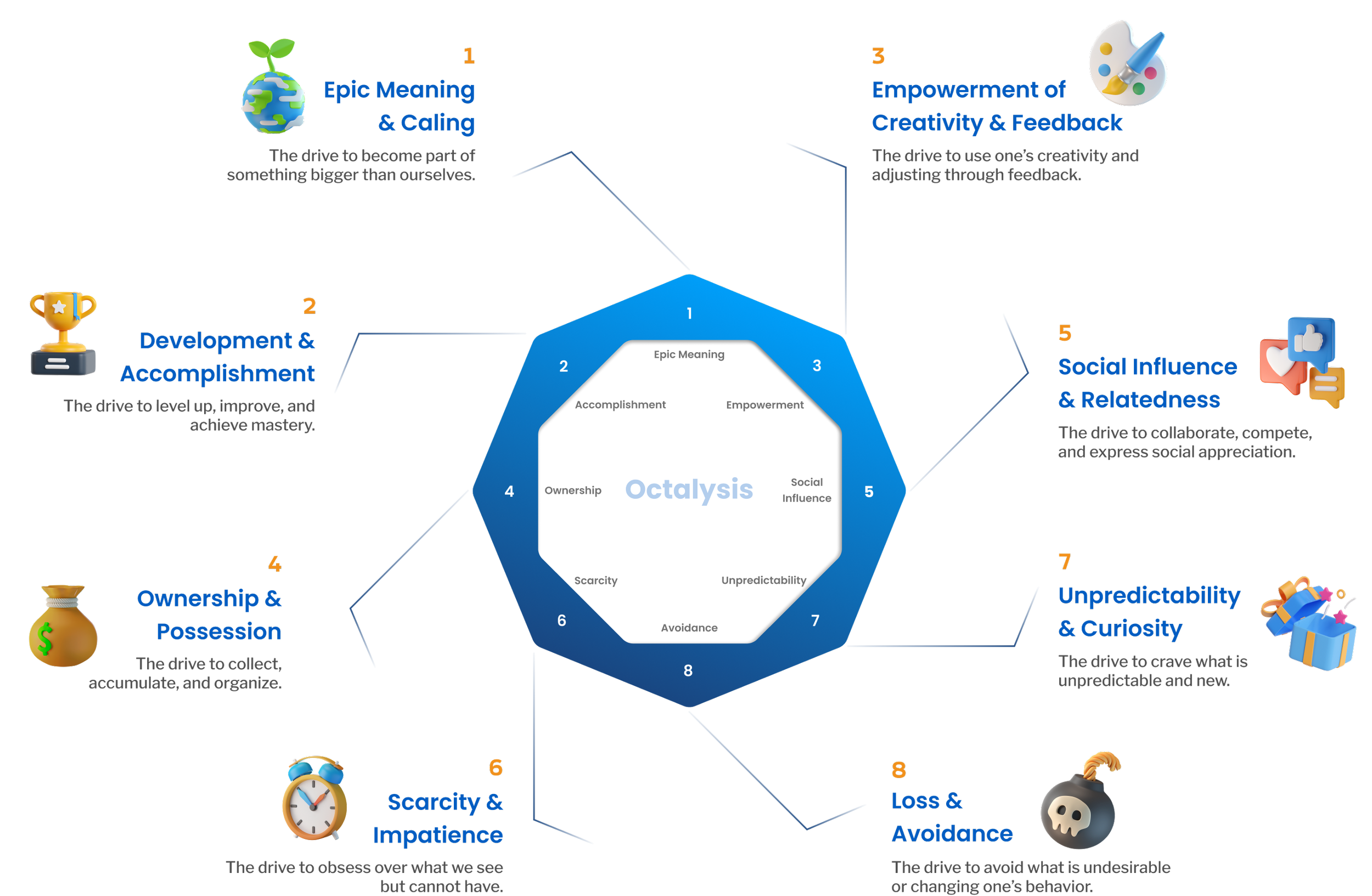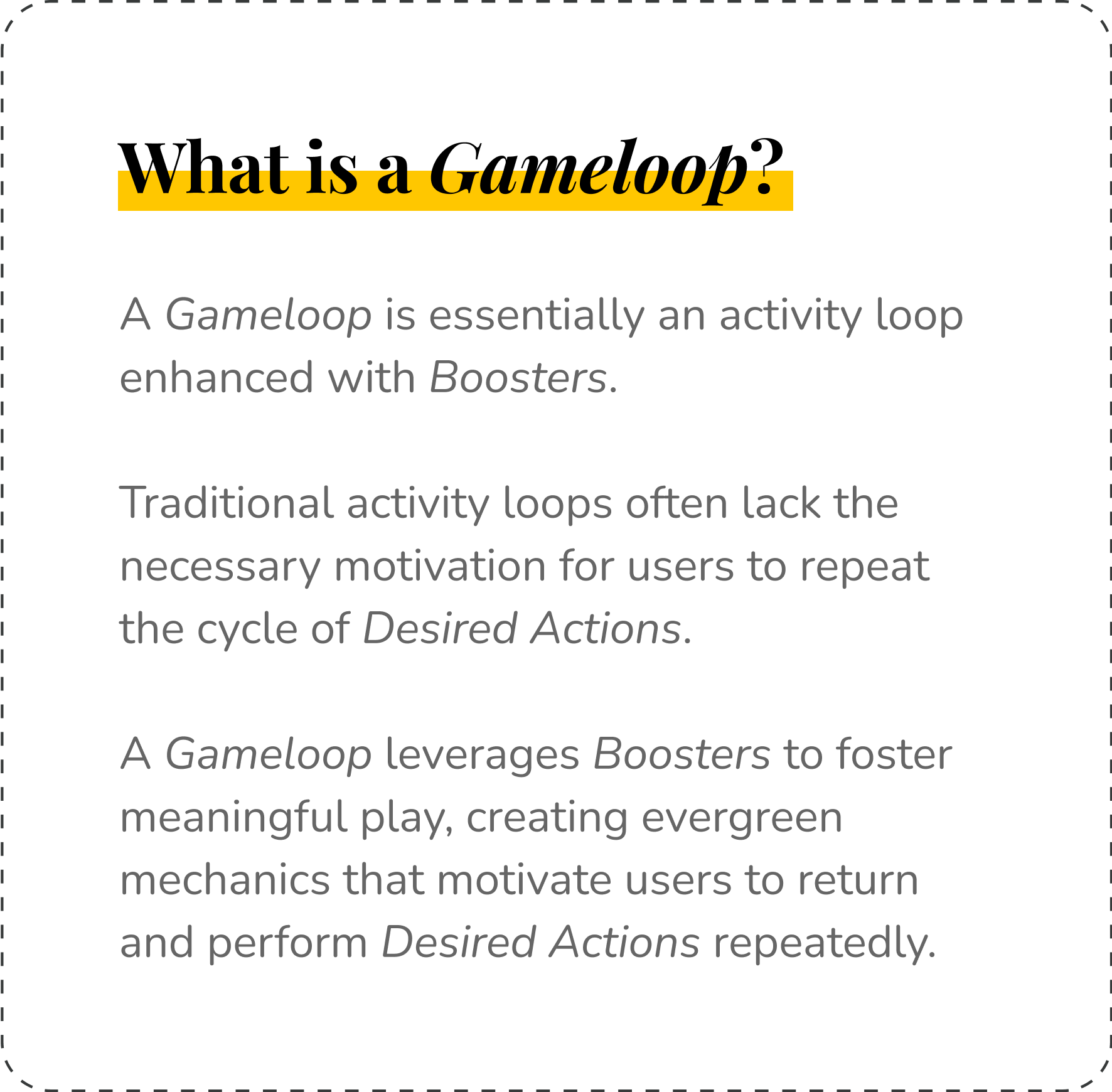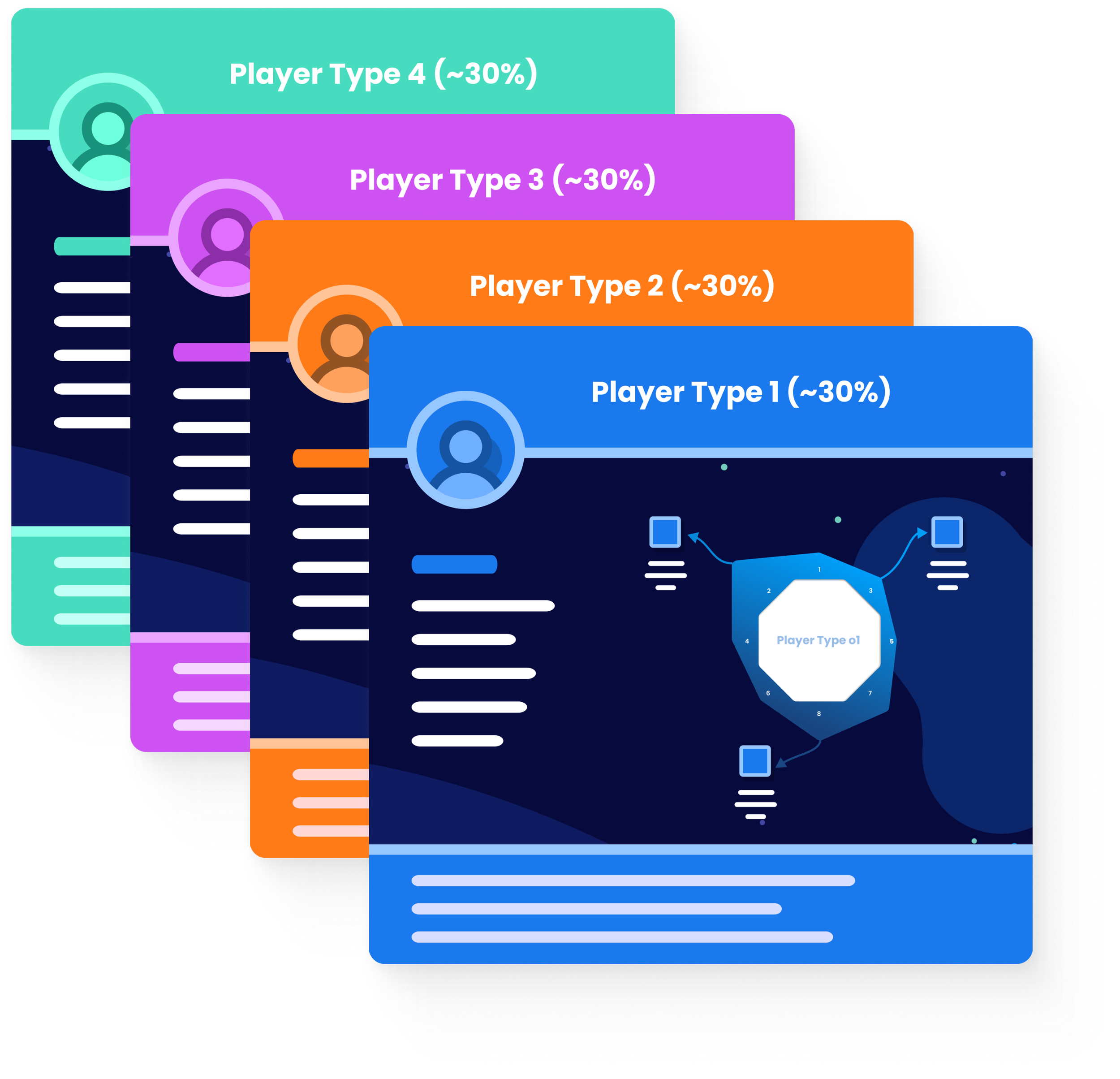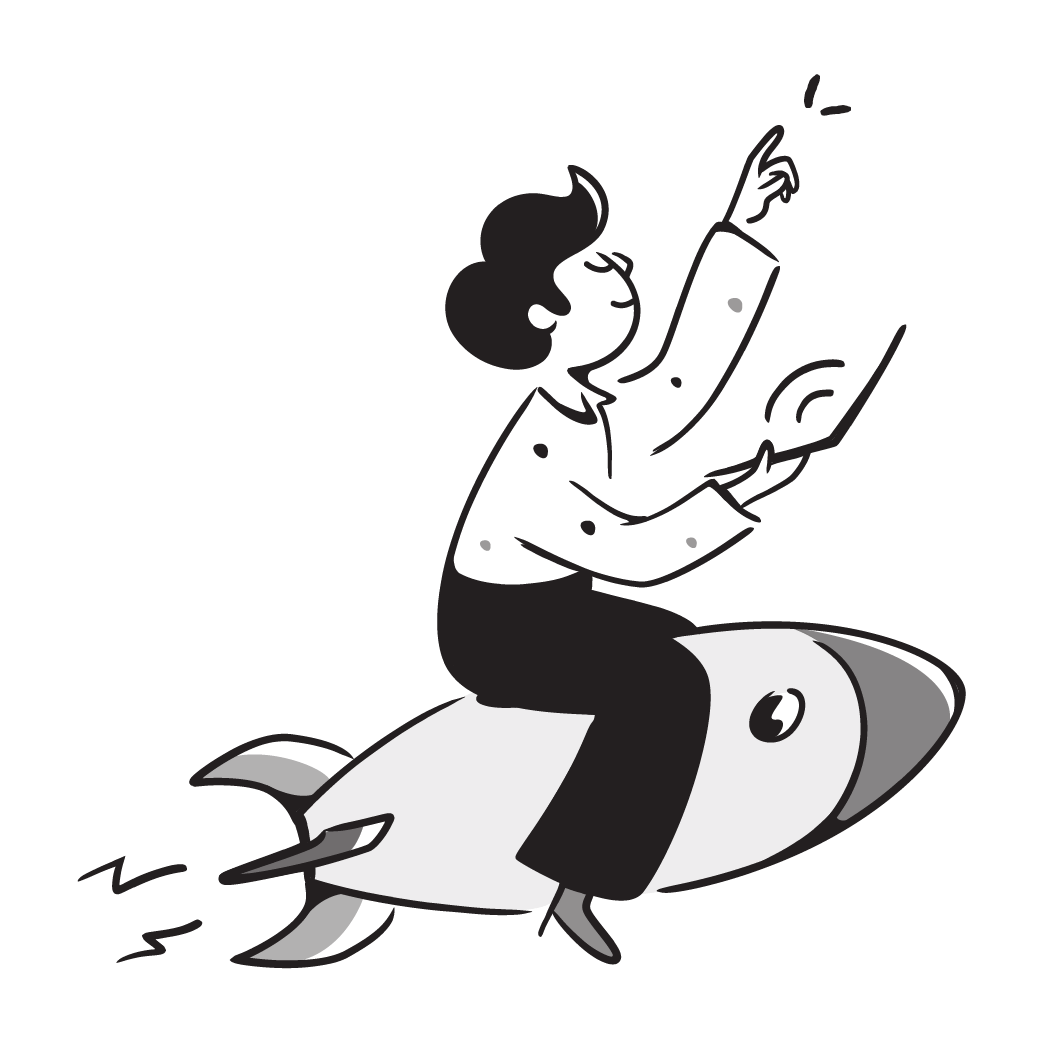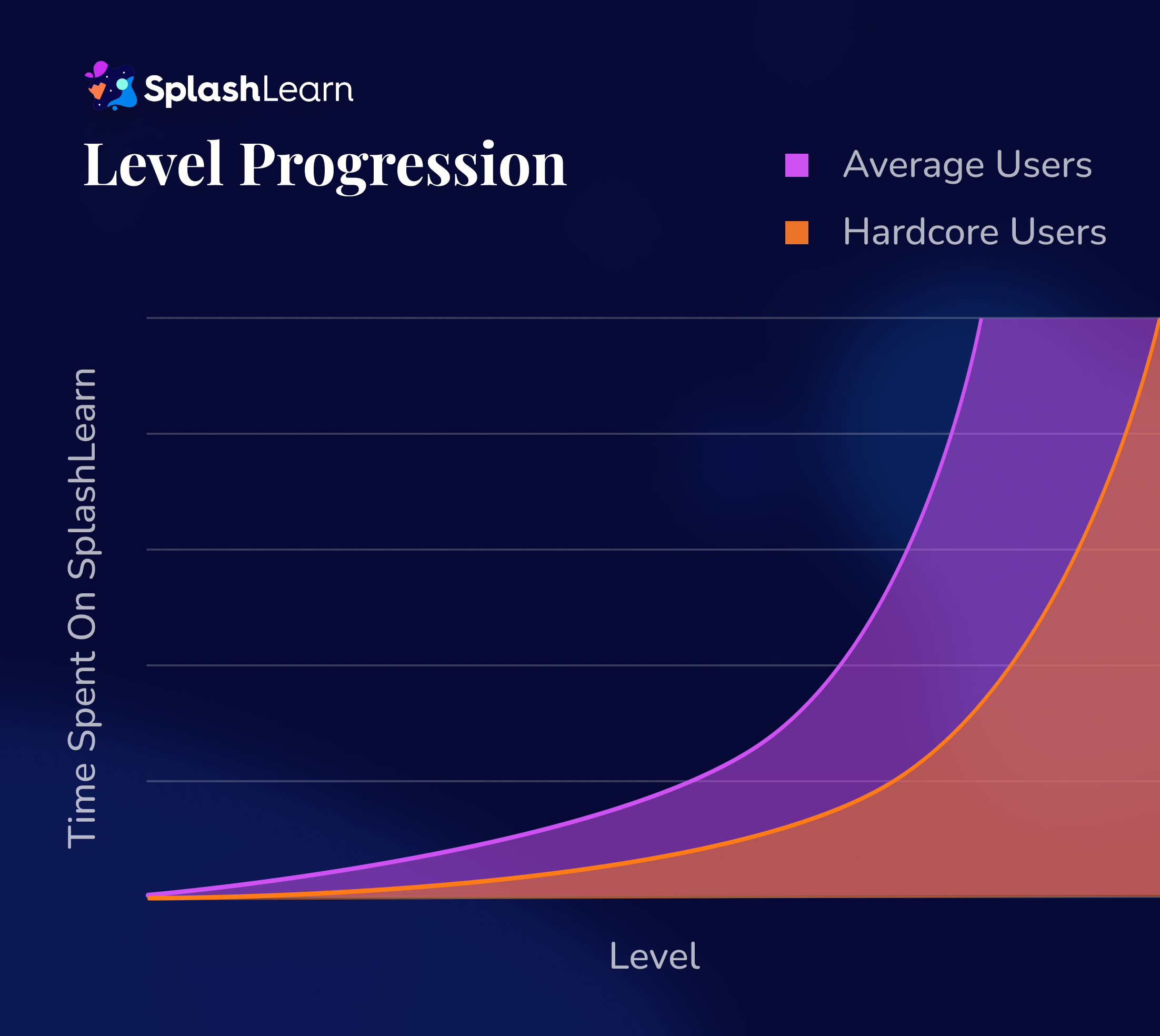
Educational Gamification
Transforming Digital Learning Experiences: A Gamification Approach to SplashLearn
Scroll ↓
Date
Aug 2023 - Nov 2023
Role
Gamification Consultant
Skills
Behavioral Science
Gamification Design
Economy Design
Vision Visualization
Results
Delivered. Implementation ongoing.
Introduction
Gamification, combined with digital innovation, has fuelled the development of immersive learning experiences, making education more interactive and accessible. These advancements can be leveraged to create engaging and effective learning environments.
My Italian colleague and I, both with different backgrounds in education, collaborated on the SplashLearn project to enhance the experience of children through gamification. SplashLearn is an Indian-based online learning platform for children worldwide, with a specific focus on US students. We combined theoretical learning in behavioral science and human-focused design with practical exercises to assist SplashLearn in comprehending gamification concepts and techniques. Throughout our collaboration, we gathered valuable insights into SplashLearn's goals and vision. Leveraging this understanding, we not only provided feedback on their work but also crafted a detailed plan of action and produced high-fidelity wireframes as the final deliverables.
Join me as I guide you through our collaboration with SplashLearn, showcasing how an effective gamified system and economy can bring about positive transformations in online education.
My Responsibilities
Economy Design
Client Management
High Fidelity Wireframes
Impart Gamification Knowledge
Experience Audit
Understand Client Vision

SplashLearn is an acclaimed game-based learning program adored by more than 40 million children for its fun Math and ELA practice. It features over 8,000 learning games and activities designed for preschool through Grade 5, providing an engaging and enjoyable educational experience for young learners worldwide.
The Approach
We use the Octalysis Framework to decipher the complexity of human motivation through the 8 Core Drives, each representing a fundamental motivator that guides humans' actions and behaviors.
This design approach leads to highly engaging experiences, creating environments where users are naturally motivated to participate and promote the experience, thereby boosting business success.
We relied on the Octalysis approach of viewing users as players and their experience as a journey that can be broken down into four phases: discovery, onboarding, scaffolding, and endgame. We began our collaboration with SplashLearn by conducting a comprehensive audit of their marketing channels, website, and product, which is the online learning experience. Our primary focus was to uncover areas that lack motivation and require improvement. This involved analyzing all four phases of the user journey to understand their motivations, interactions, and pain points.
In the Discovery Phase, we assessed how users first encounter SplashLearn, whether through organic search, social media platforms, or word-of-mouth referrals. We looked at the clarity of messaging, the attractiveness of visual assets, and the ease of navigation to ensure a smooth introduction to the platform.
Moving on to the Onboarding Phase, we evaluated the sign-up process and the effectiveness of the tutorial experience in helping users understand the platform's features and benefits. We provided feedback on ways to streamline the onboarding journey, reduce friction points, and increase user engagement from the outset.
The Scaffolding Phase involved a deep dive into SplashLearn's main activity loop and its economic balance. We analyzed user motivations, progression pathways, reward systems, and feedback mechanisms to optimize the overall user experience. Our recommendations aimed to enhance user motivation, encourage continued engagement, and promote skill development.
Lastly, in the Endgame Phase, we explored the features available to engage veteran users and keep them invested in their learning journey. Our goal was to identify missing elements that create a compelling endgame experience, fostering long-term user retention and loyalty.
Experience Audit
Activity Loop
In our analysis of SplashLearn’s initial activity loop we observed that while it offers a gamified experience, there was a notable absence of incentives at the end of the loop to motivate users to return and perform Desired Actions again.
In the graph below, you can observe that users begin with learning activities on the platform to earn coins and EXPs. They then utilize these rewards to upgrade their profile status. However, the loop lacks additional motivation after this stage.
In a more robust gamified system, users should gain a special power that aids them in performing Desired Actions more effectively. For instance, upon upgrading, instead of earning 3 coins, they could earn 5 coins. This special power, known as a Booster, when incorporated into an activity loop, transforms it into a Gameloop (see on the right) that is more engaging and sustainable in the long term.
A lack of a compelling Booster system could potentially lead to user disengagement, where some users might discontinue their journey once they reach a certain status or milestone. This challenge posed a significant hurdle for SplashLearn in retaining long-term users.
We'll discuss Boosters later in this case study, exploring how they're integrated into a gamified system to foster meaningful and enduring engagement.
The audit resulted in a presentation with over 300 slides, each detailing pain points and issues in SplashLearn’s experience across the four phases. To make this extensive result more digestible and actionable, we synthesized the findings into key takeaways and identified quick fixes. This approach enables SplashLearn to prioritize and address the most accessible issues first, leading to tangible improvements in user experience and engagement.
In the following, let me walk you through our design process to show how we collaborated with SplashLearn to enhance their gamified experience and economy. The Octalysis Design Process we employed encompasses 5 steps: Strategy Dashboard, Brainstorming, P/E Feature List, Battleplan, and Wireframes.
Octalysis Design Process
Build Up a Foundation with a Strategy Dashboard
{ Step 01 }
Before we begin brainstorming on the product or considering features to implement, it's crucial to establish a clear foundation of key information such as the business goals of the design effort and the target users of the product. Therefore, the first step in our process is to define all the critical components of this effort, using the Strategy Dashboard as the structure to keep track of them.
A Strategy Dashboard is the minimum viable information needed for an effective behavioral design. It is a living reference point throughout the design process, continuously modified based on the client's needs, goals, and vision. A comprehensive Octalysis Strategy Dashboard encapsulates 6 vital elements: Business Metrics, Player, Desired Actions, Feedback Mechanisms, Win-state, and Rewards.
Business Metrics
The first crucial element to define in the strategy dashboard is the business metrics. These metrics represent the end results that the client aims to improve. They should be quantifiable and prioritized based on importance. To assist SplashLearn in defining their business metrics, we ask questions such as “How do you measure your biggest success?” This helps align our design efforts with their business objectives and ensures that our design solutions directly contribute to measurable improvements.
Player
Players represent the users within the experience. For SplashLearn, in addition to the main user groups of students, parents, and school teachers, we further divide the student group into four player types. Every individual is motivated by different factors. In a learning environment, some students may be motivated extrinsically by tangible rewards or recognition. Others may be driven intrinsically by factors like autonomy or curiosity. Our role is to help SplashLearn identify the motivations behind each player type, and develop strategies that effectively inspire and engage users based on their unique motivations.
Desired Actions
The next step is to outline the Desired Actions that we want users to perform throughout their journey on the platform. We guide the client to list all Desired Actions across the user journey, from the discovery phase to onboarding, scaffolding, and endgame phase. No action is considered too trivial, as each contributes to the overall user experience and impacts the business metrics.
Feedback Mechanisms
Feedback Mechanisms are the communication channels that inform the players about their actions and progress, meanwhile prompting them to perform Desired Actions and stay engaged. Common Feedback Mechanisms include features like notifications, progress trackers, or performance reports. We assisted the client in listing out all their existing feedback mechanics. This list served as a foundation for the next step in our design process: Brainstorming. By doing so, we gain clarity on what's already in place and identify any potential gaps that need to be addressed.
Win-State
Win-state represents the outcome of players' success in completing Desired Actions. Every Desired Action should lead to a Win-State, providing a sense of achievement and fulfillment for the player.
Rewards
Rewards are often embedded in Win-State moments. Whether extrinsic like in-game currency or intrinsic like recognition, rewards reinforce positive behaviors and sustain engagement over time, enhancing the overall user experience. We asked SplashLearn to compile a list of their current rewards. As we transition to the Brainstorming step, we would then initiate discussions on potential new rewards tailored to user preferences based on the player type analysis. This approach helped create a personalized and effective reward system.
Brainstorming Solutions to Elevate User Engagement
{ Step 02 }
As shown at the beginning of this case study, we pinpointed many pain points during the experience audit. Now, with the goal and users of SplashLearn defined in the Strategy Dashboard, we started brainstorming ideas to solve these pain points and improve the engagement and interactivity of SplashLearn’s experience. We aimed to compile an extensive list of ideas to promote Desired Actions and consequently have a quantifiable impact on Business Metrics.
When brainstorming ideas, our approach focuses on the user and their motivation, rather than simply thinking about cool features. One of the fundamental questions we asked was how we could leverage the Octalysis 8 Core Drives to encourage users to take Desired Actions at various stages of their journey.
As an example, for users in the Scaffolding Phase driven by competition (Core Drive 2: Accomplishment & Core Drive 5: Social Influence), we focus on brainstorming features that cater to their desire for achievement and recognition, such as a leaderboard system. The leaderboard acts as a Feedback Mechanism, enabling users to monitor their progress on the platform. It engages competitive users by leveraging their inherent drives, encouraging them to aim for higher standings, and fostering a sense of accomplishment and social validation.
The scope of our brainstorming session explored beyond just Feedback Mechanisms. We considered various features aimed at motivating users to take desired actions, such as marketing content, rewards system, and more.
Brainstorming Rewards
In addition to using the Octalysis 8 core drives to brainstorm an effective reward system, we also employed the SAPS model developed by Gabe Zichermann (2011). The SAPS model, which stands for status, access, power, and stuff, provides a structured way to think about rewards and incentives. As you go from the top of the pyramid to the bottom, the reward becomes more expensive for the company to give out, but less compelling for the user.
Many companies often rely heavily on giving out tangible rewards or "stuff" as incentives, assuming it will retain users. However, while freebies can be appealing, it's also the most expensive and least compelling type of reward. This approach sometimes results in companies overspending without achieving the desired outcomes.
However, this doesn't imply that tangible rewards are ineffective; rather, it underscores the importance of offering the right type of reward at the appropriate phase of the user journey. For instance, during the Discovery Phase, when attracting new users is crucial, offering a $10 gift card (stuff) can be an effective incentive. On the other hand, in the Endgame phase, where retaining loyal users is key, a Top Performer badge (status) might be more meaningful and motivating.
Brainstorming Boosters
During the experience audit, we highlighted SplashLearn’s challenge in user retention during the Scaffolding Phase. Recognizing this, our focus centered around brainstorming Boosters. Categorized as Power rewards, Boosters play a pivotal role in empowering users to perform Desired Actions more effectively. In SplashLearn’s experience, these Desired Actions are learning activities. When users enter the Scaffolding Phase, they start the loop of performing Desired Actions repeatedly. However, this repetitive nature can sometimes lead to a sense of monotony or disengagement.
Boosters in gamification can take various forms. Our repertoire consists of many different varieties. They could be temporary power-ups that enhance a user's abilities for a limited time, allowing them to complete tasks faster or earn more rewards. They could also be permanent upgrades that users unlock as they progress.
Implementing Boosters strategically involves understanding the user journey and identifying key points where users might experience fatigue or disengagement.
For example, if users typically lose interest after completing a certain number of learning activities, introducing a Booster that provides extra rewards for them to tackle challenges could re-engage them. Similarly, if users struggle with a specific type of activity, offering a Booster that provides hints or extra practice opportunities could help them overcome obstacles and stay motivated.
Together with SplashLearn, we generated over 200 ideas. While having a plethora of ideas is beneficial, it's crucial to consider moving forward the capacity of the development resources. The next phase of our process will be dedicated to prioritizing these ideas and creating a breakdown view that outlines what SplashLearn will look like through different versions of its development.
Prioritizing Using the P/E Feature List
{ Step 03 }
To ensure a balanced approach that maximizes impact and maintains feasibility, we use the P/E Feature List to prioritize ideas we generated during the brainstorming sessions, enabling SplashLearn to make informed decisions about which features to integrate into their product roadmap.
"P/E" stands for Power and Ease, with each element representing crucial dimensions in evaluating the potential impact and feasibility of a given feature.
The "Power" score signifies the degree to which a feature promotes the Desired Actions among users. It encapsulates how effectively the feature enhances SplashLearn’s user experience and aligns with their Business Metrics.
Meanwhile, the "Ease" score reflects the ease of implementing the feature within SplashLearn’s capacity. This metric considers factors such as technical complexity, resource requirements, and compatibility with the overall design architecture.
For instance, using augmented reality (AR) in learning activities can be appealing as it piques user curiosity. However, its implementation can pose technological challenges. Consequently, despite its potential high Power Score, when paired with a low Ease Score in the formula, the overall priority score remains relatively low. As a result, integrating AR features will be less prioritized on the list.
While features are evaluated via the Power and Ease Scores, we also have other scoring systems for Desired Actions and Rewards:
Desired Actions
We evaluated and scored desired user actions based on their importance to drive SplashLearn’s key Business Metrics at different phases of the user journey. For instance, in the Discovery Phase of SplashLearn, the Main Desired Action is for users to click on the download button. As such, this action would receive a high score due to its critical role in user acquisition, hence the product's success.
Rewards
Rewards are evaluated based on their perceived value to users and their viability within the company's resource constraints. While a $100 cash reward might be highly incentivizing for users, it is probably not sustainable for a company to offer at scale due to resource limitations. Balancing the perceived value for users with the company's ability to deliver these rewards is crucial in designing effective incentive mechanisms that drive desired behaviors without compromising profitability.
By employing these prioritization strategies, we ensured that our design decisions were aligned with SplashLearn’s business objectives and parameters. Next, we will explore how we define detailed information on the features we decided to implement into SplashLearn’s experience.
{ Step 04 }
Defining Details in a Battleplan
This step plays a critical role in developing the features we chose to implement earlier. Typically, we create a Battleplan using a Google Sheet where each tab contains essential details for the development team to effectively create the feature in a gamified system. For instance, the tab dedicated to the leveling system includes information such as the number of levels, the required experience points (EXP) for each level, and the rewards or power unlocks associated with each level.
Sources and Sinks
A crucial aspect to focus on in this step is balancing SplashLearn’s gamified system’s economy, which involves defining sources and sinks. Sources refer to how users earn in-game currency, like completing learning activities, achieving milestones, or participating in special events. Sinks are how users spend or return that currency back into the system, such as purchasing virtual goods or accessing advanced features. In the sources tab, we detailed all the ways users can earn currency on SplashLearn, along with the expected daily amount and total accumulation over time. Similarly, in the sinks tab, we listed the items users can purchase on SplashLearn, along with their functions and effects. These virtual items range from pure virtual decorations to Boosters designed to temporarily enhance users' abilities to level up or earn currencies.
With this information, we can simulate users’ wealth accumulation in SplashLearn. For instance, an average user will gain 15 coins by completing 3 learning activities and achieving a milestone per day. If a powerful Booster costs 150 coins, they will be able to afford it after 10 days on SplashLearn. This simulation is important because it helps us validate whether the economy we design is sustainable.
Balance an Economy that has Boosters
Introducing Boosters added another layer of complexity to SplashLearn’s gamified system’s economy. Boosters empower users to perform Desired Actions more effectively, however, if boosters are too potent or easily accessible, they can disrupt the economy's equilibrium by inflating in-game currency or diminishing the value of rewards and achievements.
Therefore, to validate and refine the metrics of the system’s economy, we built a simulation tool in Google Sheets to model user progression and economic dynamics. In this simulation, we focused on two user types: average users and power users, distinguished by their frequency and duration on SplashLearn. This segmentation enabled us to design a balanced economy that presents meaningful challenges for both types of users.
The primary goal of this approach was to ensure that power users do not progress too rapidly in terms of levels achieved or wealth accumulated. This deliberate pacing is vital to allow power users to find their interactions and accomplishments within the system genuinely meaningful and rewarding. Simultaneously, we aim to avoid overwhelming average users, as it could lead to frustrations and potentially cause them to disengage or even quit the platform.
The graph on the right illustrates the stimulation on the progressions of both types of users in SplashLearn’s new leveling system. We aim to see a progression curve that is neither too steep nor too gradual, offering a rewarding and steady journey for users as they advance through the levels.
Transform an Activity Loop into a Gameloop
In the previous phase, we prioritized and selected features and rewards to include in SplashLearn’s product roadmap. With these decisions made, we proceeded by transforming SplashLearn's activity loop into a Gameloop. Implementing all features at once isn't feasible, so we created multiple Gameloops to account for this. Each version aligned with SplashLearn's implementation stages. Below is an example of SplashLearn's V1 Gameloop. You can see that Boosters have the capacity to increase users' motivation to return and repeatedly perform Desired Actions. When coupled with Feedback Mechanisms that track users’ progress and prompt them towards Desired Actions, the entire experience has been elevated to new levels of engagement and interactivity. This enhancement leads to a more rewarding and satisfying user journey overall.
Up next is the final step of our design process: Wireframing, where we transform ideas we generated and defined into tangible prototypes.
{ Step 05 }
Visualizing Ideas with Wireframes
Wireframes encapsulate the functionality, layout, and interactivity of the digital experience we are creating. However, our approach to wireframing goes beyond mere visual representation.
Through our collaboration with SplashLearn, we gained a profound understanding of their vision, as well as insights into user motivations. Our wireframes were tailored to align with SplashLearn's vision while strategically resonating with user motivations to drive Desired Actions.
We used the Octalysis 8 Core Drives to guide us in crafting a captivating and interactive experience for SplashLearn. In the example below, we illustrate how each wireframe element, from buttons to progress indicators, is strategically placed to leverage these Core Drives, creating an experience that not only looks aesthetically pleasing but most importantly drives Desired Actions. Our final deliverables included high-fidelity wireframes and interactive prototypes. However, since the product is still under development, I can only provide an example in low-fidelity.
Active Listening to Understand Client’s Vision
Cross-cultural Collaboration
Teach the client how to apply gamification theories to practice
Use visuals to explain complicated concepts
Key Takeaways
Umang Jain, Co-Founder of SplashLearn


